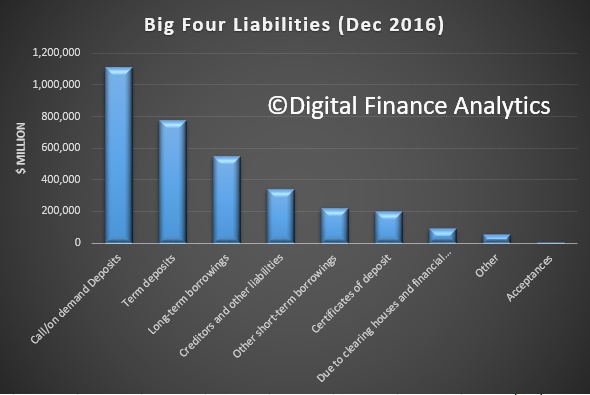Improving outcomes for those most in need
The Government will improve outcomes in social housing and homelessness by:
- Requiring States and Territories to meet social and affordable housing targets under revised funding arrangements
- Providing $375 million to give funding certainty to providers of homelessness services
- Establishing a National Housing Finance and Investment Corporation to operate an affordable housing bond aggregator
- Providing tax incentives to increase private investment in affordable housing
Helping first home buyers
Many Australians, particularly younger Australians, are finding it harder to save for their first home.
The Government will make this savings task easier by allowing first home buyers to build a concessionally taxed deposit inside superannuation through the First Home Super Saver Scheme.
From 1 July 2017, first home buyers can contribute up to $15,000 per year and $30,000 in total in voluntary contributions to their superannuation account, within existing contribution caps, that can then be withdrawn for their deposit. These savings will benefit from the tax advantages of superannuation. Contributions and earnings will be taxed at only 15 per cent, rather than at marginal rates, and withdrawals will be taxed at marginal rates less 30 per cent. Both members of a couple can save within the cap and then combine savings for a single deposit.
Boosting Louise and Craig’s first home deposit
Louise earns $60,000 a year and wants to buy her first home. Using salary sacrifice, she annually directs $10,000 of pre-tax income into her superannuation account, increasing her balance by $8,500 after the contributions tax has been paid by her fund. After three years, she is able to withdraw $27,380 of contributions and the deemed earnings on those contributions. After withdrawal tax, she has $25,760 that she can use for her deposit. By using this scheme, Louise has saved around $6,240 more for a deposit than if she had saved in a standard deposit account.
Louise’s partner, Craig, makes the same income and salary sacrifices $10,000 annually to superannuation over the same period.
Together, after 3 years, Louise and Craig have $51,520 for their first home, $12,480 more than if they had saved in a standard deposit account.
Reducing barriers to downsizing
Older Australians will be encouraged to downsize and free up housing stock. These homeowners will be given greater flexibility to contribute the proceeds of the sale of their home into superannuation. Downsizing frees up larger homes for younger families.
From 1 July 2018, people aged 65 and older will be able to make a non-concessional contribution of up to $300,000 to their superannuation after selling their home. This will be in addition to any other contributions they are eligible to make.
Helping George and Jane downsize
George and Jane, both retired and aged 76 and 69, sell their home to move into more appropriate accommodation. The proceeds of the sale are $1.2 million. They can both make a non-concessional contribution into superannuation of $300,000 from the sale proceeds ($600,000 in total), even though Jane no longer satisfies the standard contribution work test and George is over 75. They can make these special contributions regardless of how much they already have in their superannuation accounts.
Tightening foreign investor rules
The Government will stop foreign and temporary tax residents from claiming the main residence capital gains tax exemption when they sell their Australian property.
To reduce avoidance of capital gains tax in Australia by foreign residents, the Government is bolstering the integrity of the foreign resident capital gains tax withholding system by increasing the rate from 10 per cent to 12.5 per cent and reducing the threshold from sales valued at $2 million or above to $750,000 or above.
Helping private renters
A new annual charge of at least $5,000 will apply to new foreign-owned properties left vacant which will free up more rental housing stock.
The Government will also work with the States and Territories to develop standard long-term leases that offer more security to renters.
Improving regulator tools to address housing risks
The Government is ensuring that the Australian Prudential Regulation Authority (APRA) is able to respond flexibly to financial and housing market developments that pose a risk to financial stability. This includes giving APRA new powers over the provision of credit by lenders that are outside the traditional banking sector.
The Government also recognises that housing pressures and risks may not be the same in markets across Australia. For this reason, the Government will make it clear that APRA has the ability to use geographically-based restrictions on the provision of credit where APRA considers it appropriate.
Better targeting tax deductions
The Government will improve the integrity of the tax system by disallowing accommodation and travel deductions for residential rental property and by limiting depreciation deductions for the plant and equipment forming part of residential investment properties.
Together with changes to foreign investor rules, these changes will raise $1.4 billion over the forward estimates period.
Building more homes
Boosting supply and speeding up the delivery of new housing
National Housing Infrastructure Facility
The high costs of building critical infrastructure, such as roads and water networks, can delay the commencement of housing developments and slow the supply of new homes.
A $1 billion National Housing Infrastructure Facility will be established to provide a range of financing options to local governments. This will allow councils to address infrastructure bottlenecks that impede development and will bring forward the supply of new housing.
Unlocking Commonwealth land
The Government is contributing to the supply of housing by making sure Commonwealth surplus land holdings are put to better use, including for building new homes.
More than 127 hectares of surplus Defence land in Maribyrnong will be made available for housing and employment hubs. This could support up to 6000 new homes – less than 10 kilometres from the Melbourne CBD.
The Government will work with the Victorian and local governments to ensure the right infrastructure is in place, so that this land can be developed as fast as possible.
The Government is developing an online registry of Commonwealth land holdings. This will allow other levels of government, private businesses and community groups to bring forward proposals to put the land to better use, including for housing development.
Reforming State Payments
The current National Affordable Housing Agreement is not achieving its objectives. The Government will establish a new National Housing and Homelessness Agreement with State and Territory governments that is outcomes-based and reduces pressure across the housing spectrum.
The new national agreement will reward States that meet housing supply targets that better keep pace with demand, including targets for social and affordable housing. New housing that is offered exclusively to first home buyers will be encouraged.
The Government will bring forward and increase the supply of new homes by rewarding state land use planning reforms that speed up development application processes and allow for increased density in appropriate areas.
Better connecting home and work
The Government is committing more than $70 billion to infrastructure from 2013-14 to 2020-21 to reduce congestion, grow regional communities and better connect home to work.
In this Budget, the Government is establishing a $10 billion National Rail Program to fund priority regional and urban rail investments. Funding will also be provided for up to three business cases for infrastructure projects that will deliver faster rail connections between major cities and major regional centres.
The Government is working with State, Territory and local governments on City Deals that make cities better places to live and do business in.
The Government is working with the New South Wales and local governments on a Western Sydney City Deal that will help ensure the housing needs of the region are met.
The focus on housing in tonight’s Budget is an important step in addressing the complex housing affordability challenge that Australia faces according to Housing Industry Association.
Graham Wolfe, HIA Deputy Managing Director said “the Budget’s housing focus will send important signals to state and local governments and the community that the Government is serious about meet the challenge of delivering more affordable housing
“There are no simple solutions but providing well targeted assistance to help first home buyers save for their first home and to providers of community housing through the ‘National Housing Finance and Investment Corporation’ will make a difference.
“Although not an affordability measure, the incentives for ‘downsizers’ will also help stimulate the supply of new housing more appropriate to the needs of our seniors.
“Much of the work to improve housing affordability rests with state and local governments and the Budget has made significant commitments to encourage action. The National Housing Infrastructure Facility has $1billion behind it is more than just window dressing.
“Linking the National Housing and Homelessness Agreement’s $1.8 billion to the states and local governments delivering improved housing supply and better planning systems is a significant and welcome reform.
“The ‘city deals’ expansion into smaller scale projects is also a welcome development: the big ticket projects are important but much can be achieved by removing obstacles to more efficient delivery of homes.
“However HIA is concerned about the negative impacts on residential building from the Budget’s measures on foreign investment.
“Plans to tax vacant homes, limit the share of foreign investment in new projects and increase foreign investor duties all send exactly the wrong signal to potential investors in Australia. Barriers to investment are not productive for the building industry or the economy more broadly; investment needs to be encouraged.
“HIA would urge the Government to build on the Budget’s initial steps towards more affordable housing by making this a standing item on the COAG agenda.
“In the meantime HIA will continue to urge the Government to undertake a thorough national inquiry into housing affordability and establish a mechanism for the regular monitoring of the crucial supply of land for the residential building industry”, Mr Wolfe concluded.



